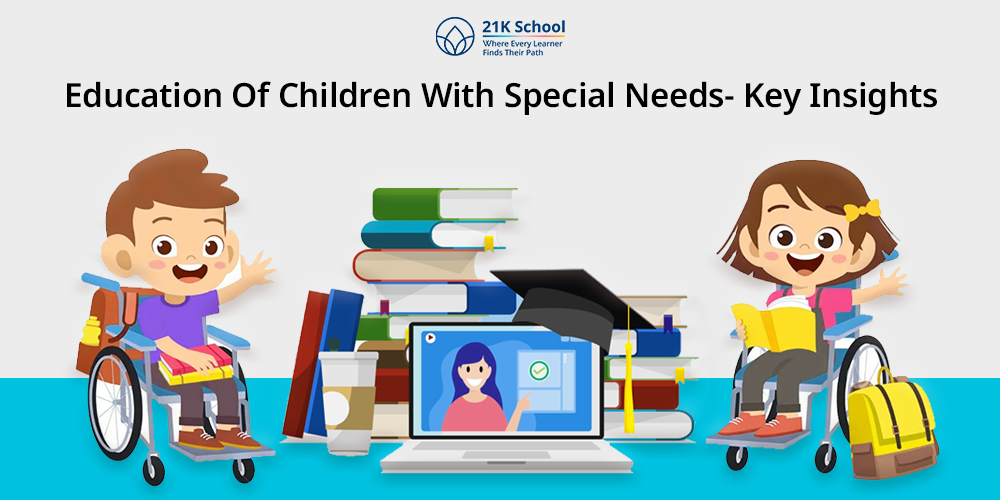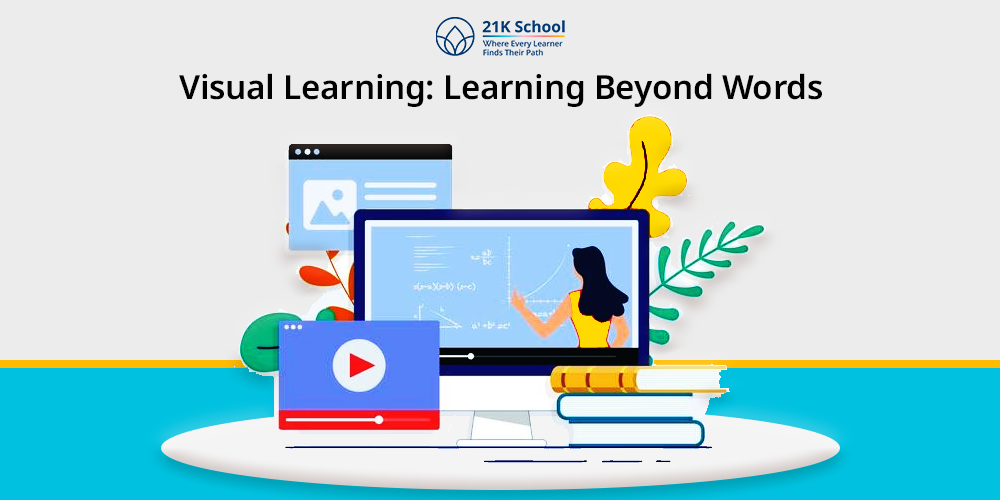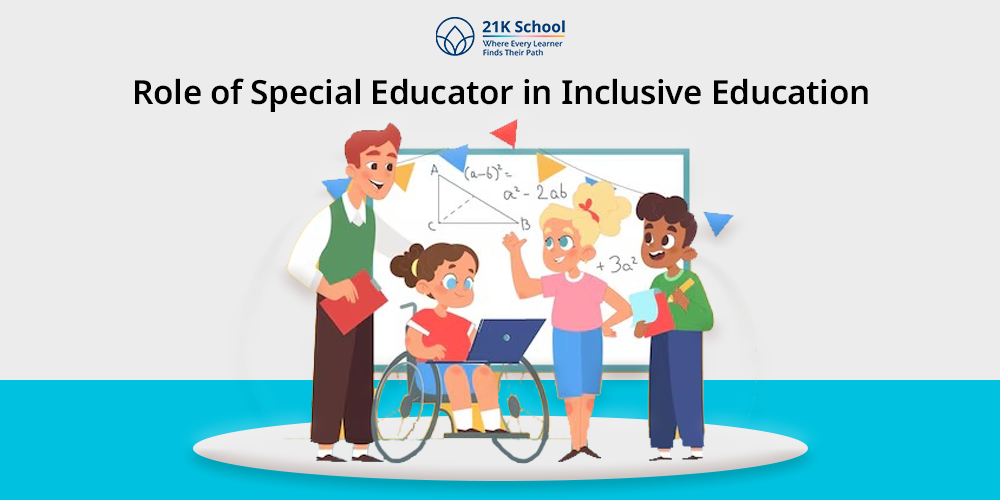
Virtual schooling in recent days has transformed the landscape for every industry especially for educational industries in classrooms for schools and for colleges it has offered a flexible and more accessible alternative to the traditional learning environment.
Virtual schools use online mediums and tools like video conferencing and platforms to teach students with the use of the internet.
With time as technology is evolving these virtual schooling systems have now gained a significant momentum emerging as a preferable option for people worldwide.
The global market has seen very unexpected growth regarding the virtual schools where in future it is expected to grow at a staggering CAGR of 15.4%, reaching a market size of US$ 16.49 billion by 2033, up from US$ 3.94 billion in 2023.
Table of Contents
Evolution of Virtual Education
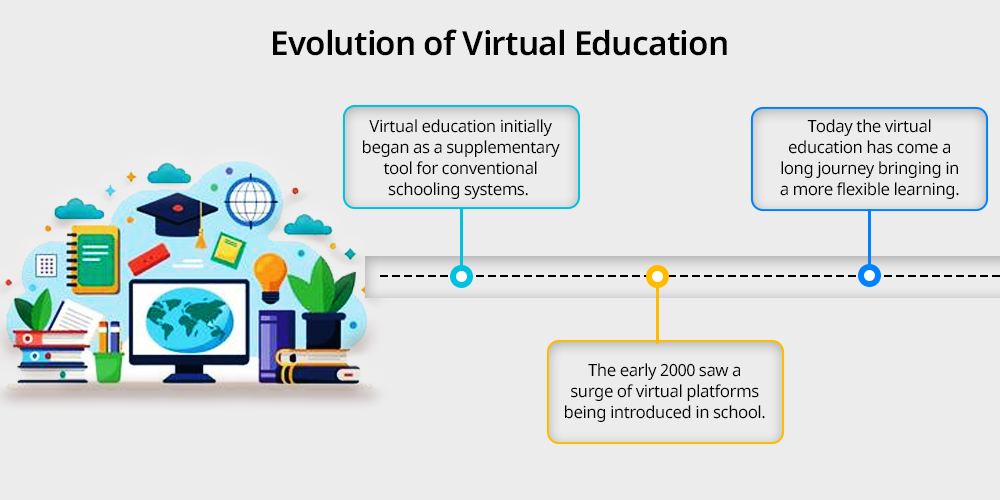
Virtual education initially began as a supplementary tool for conventional schooling systems but with time it has evolved into a stand alone education model that is capable of changing the dynamics of the educational industry.
The early 2000 saw a surge of virtual platforms being introduced in school which was spurred by technological advancement and increasing need for flexible options in the industry which was later acquired to revolutionize the world of education.
Today the virtual education has come a long journey bringing in a more flexible learning option for students from primary schooling to advanced University courses now knowledge is being important and acquired from anywhere at any time.
Key Drivers of Virtual Schooling Growth
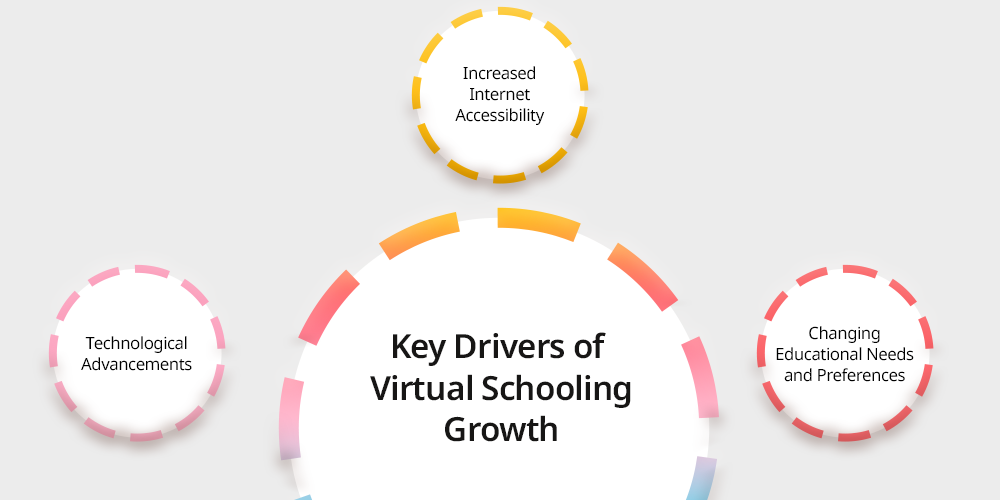
1. Technological Advancements
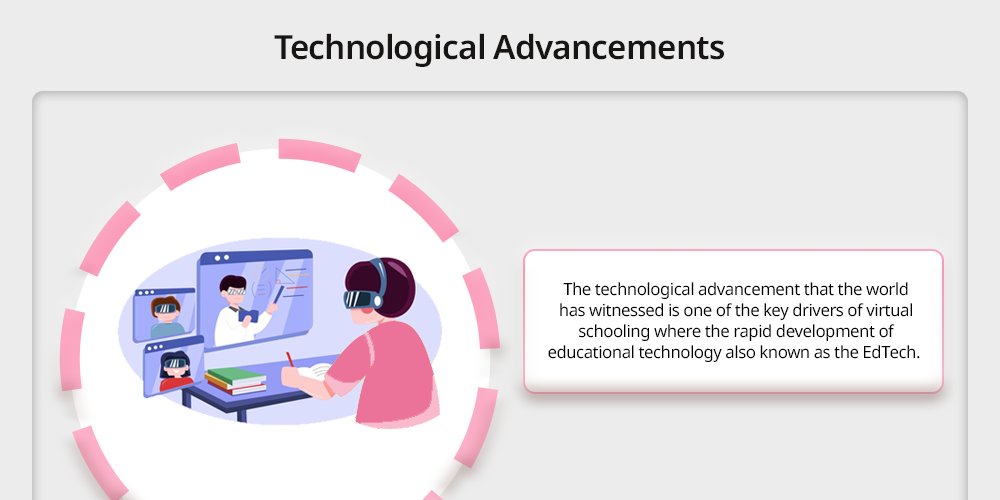
The technological advancement that the world has witnessed is one of the key drivers of virtual schooling where the rapid development of educational technology also known as the EdTech has made virtual schooling more accessible to a wider audience and tools like learning management system (LMS) and artificial intelligence (AI) along with virtual reality (VR) has made online education more interactive and efficient for people and students of all age groups.
Features like live videos lectures, gamification of learning modules and AI driven assessments have contributed immensely towards the learners experience and engagement making it a personalised journey for them.
This technology advancement has positively affected both teachers and students and will continue to grow overtime.
2. Increased Internet Accessibility
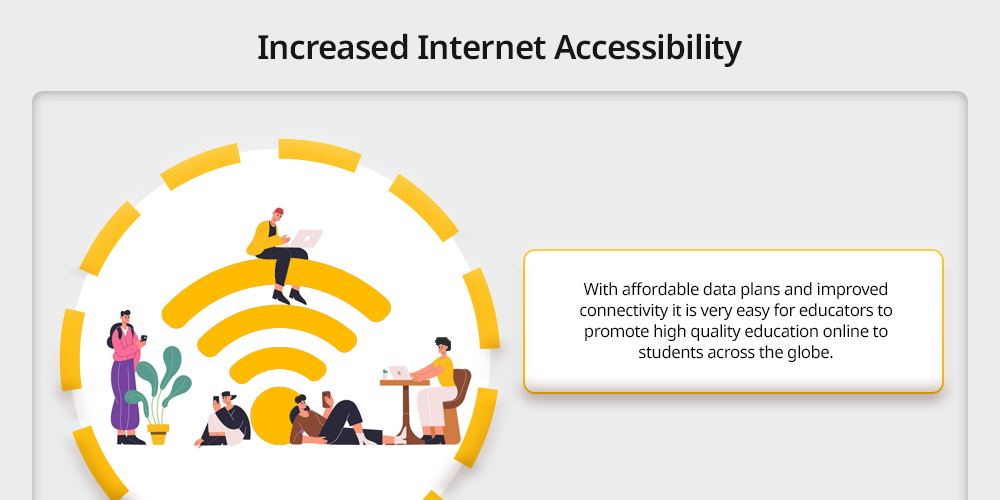
The Internet has penetrated deep into the markets and with the white spread internet available developing countries have also been a part of these virtual schooling where now with time it is more accessible to a larger audience regardless of their belongingness and the geographical identity.
With affordable data plans and improved connectivity it is very easy for educators to promote high quality education online to students across the globe even in the remote areas.
This democratization of education helps students regardless of their socio-economic background and benefits them from the elements of virtual schooling.
3. Changing Educational Needs and Preferences
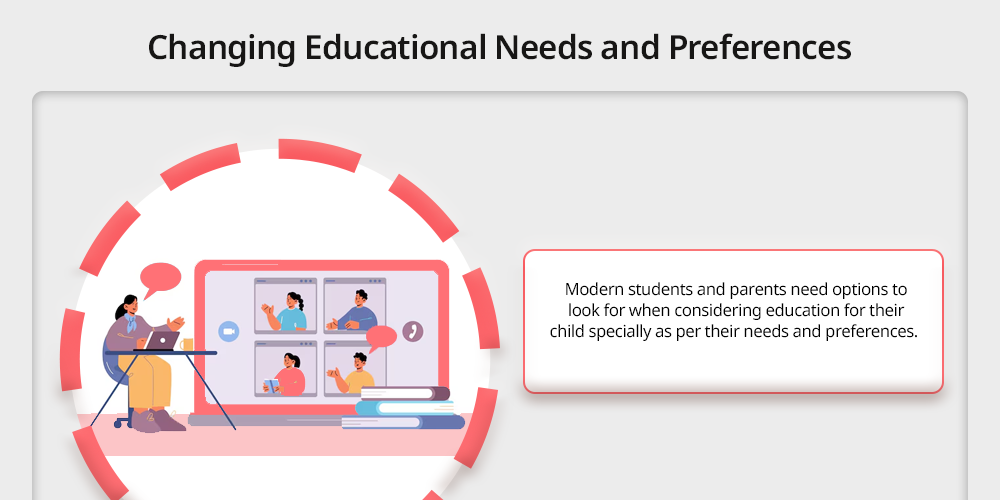
Modern students and parents need options to look for when considering education for their child specially as per their needs and preferences.
The education industry has seen a significant change in the educational knees and preferences of a parent, right from homeschooling to virtual schooling or the concept of special education; everything is a very remarkable educational journey that parents look for in their children.
Virtual schools provide more flexibility as compared to the traditional schooling methods and it is best for students who require non-traditional substitutes due to extracurricular commitments, health issues or family relocation.
These online teaching methodologies have a greater insight into a students life and thus, they provide a personalized approach to schooling far away from the traditional or conventional way of teaching, where the learner resonates with the value of autonomy in the learning journey.
Benefits of Virtual Schooling
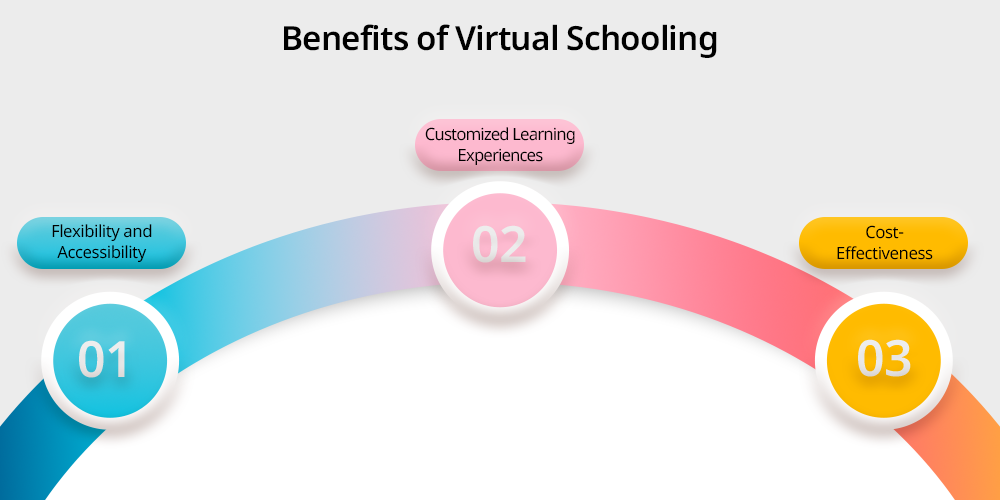
1. Flexibility and Accessibility
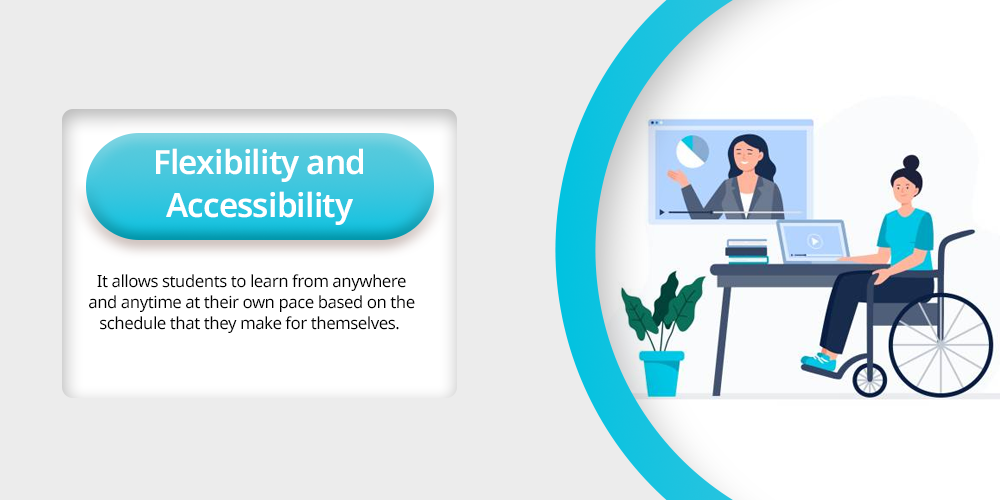
Virtual schooling system is made for the students. It allows students to learn from anywhere and anytime at their own pace based on the schedule that they make for themselves.
Every timetable is especially curated for the child as per their convenience., making it ideal for students who live a diverse lifestyle (mainly kids who have started their skill development journey and work life) and have other commitments prioritised over their schooling.
This also works in the case of special education.
These virtual schooling alternatives eliminate the geographical barrier for students ensuring that they participate in their educational journey and get access to a quality education without relocating from different parts of the world.
2. Customized Learning Experiences
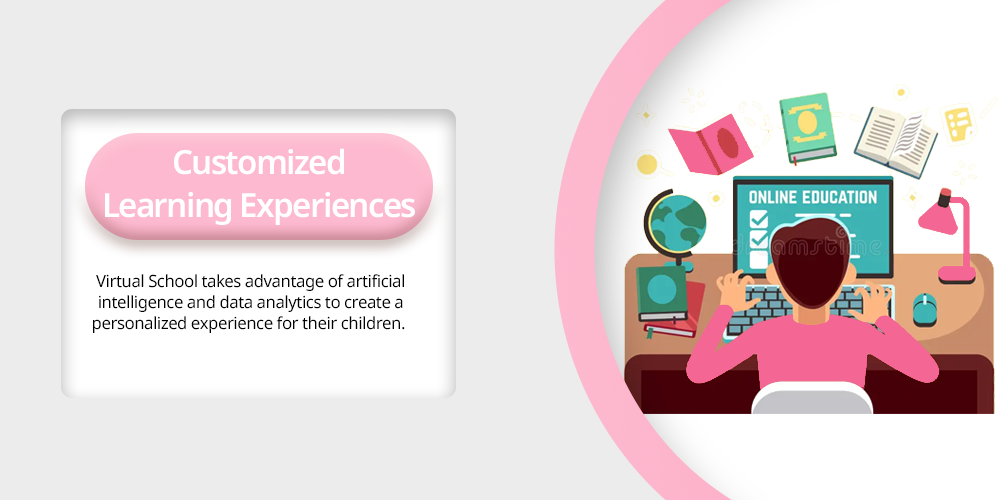
Virtual School takes advantage of artificial intelligence and data analytics to create a personalized experience for their children.
Read this blog on : Exploring the Future of Artificial Intelligence in Education
Under this situation students benefit from the tailor learning path created by analysing their performance strengths and weaknesses individually.
By offering a customised learning experience to students these platforms make it easier for them to engage and learn from the content and assessment provided to them.
This entire process of promoting a personalized learning experience for a student optimizes their learning outcomes and makes it more impactful.
3. Cost-Effectiveness
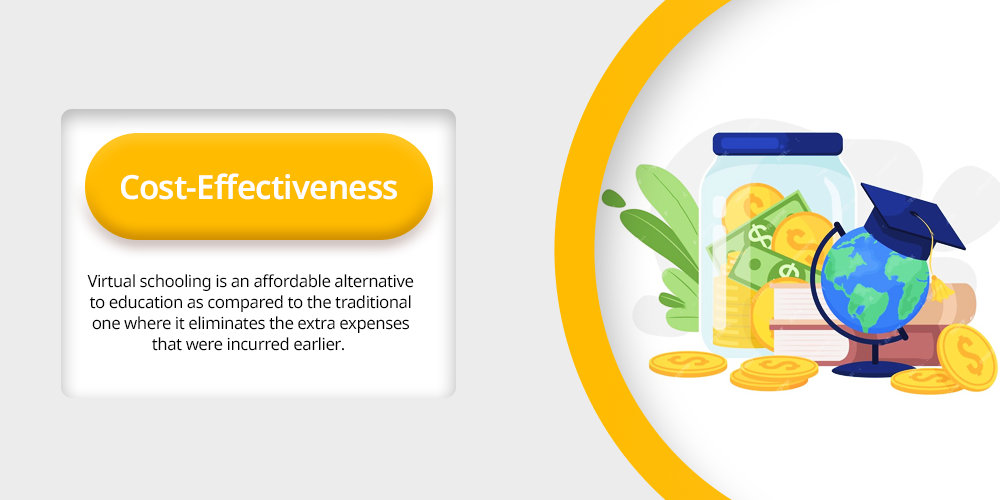
Virtual schooling is an affordable alternative to education as compared to the traditional one where it eliminates the extra expenses that were incurred earlier.
By shifting to virtual schooling alternative parents can cut down the cost involved in the transportation, uniforms and physical textbooks which were an essential part of the traditional schooling.
Additionally it also provides access to free and low cost resources available in the education industry for students providing it a broader aspect of quality education regardless of demographics and a wealth of knowledge being available on online platforms.
Though virtual schooling involves a humongous one time investment for education in the resources like laptop, PC, tablet, etc. h
Challenges in Virtual Schooling
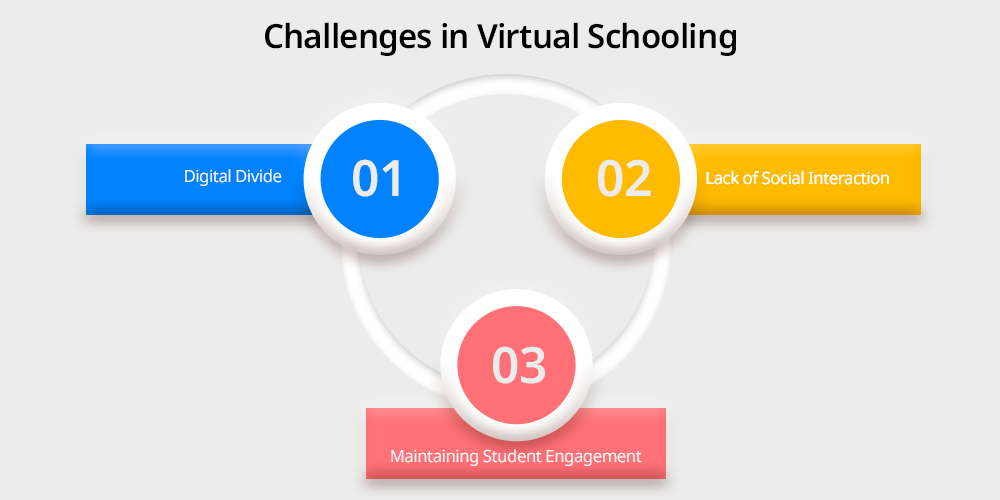
1. Digital Divide
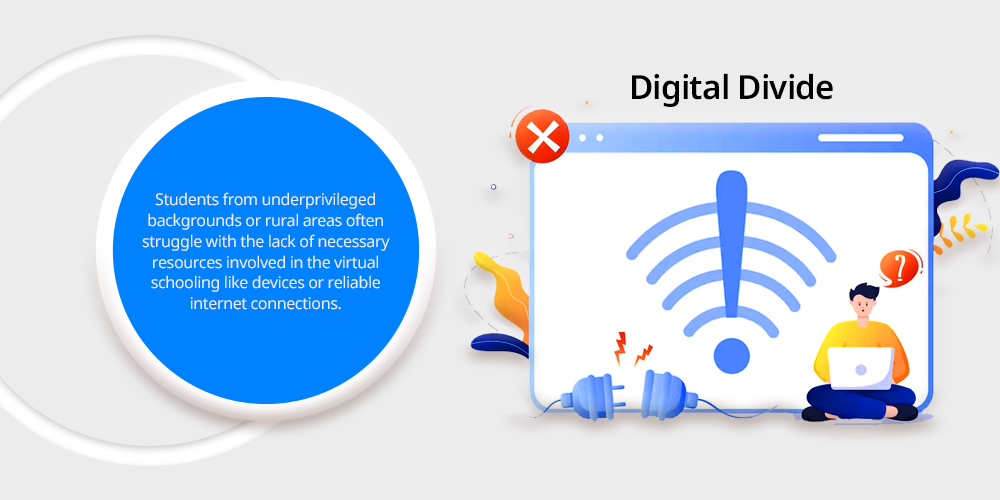
Virtual schooling completely depends on the internet and although it is believed that the internet accessibility has improved, the problem related to the digital divide remains significant.
Students from underprivileged backgrounds or rural areas often struggle with the lack of necessary resources involved in the virtual schooling like devices or reliable internet connections which would help them to participate in the learning journey effectively.
2. Lack of Social Interaction
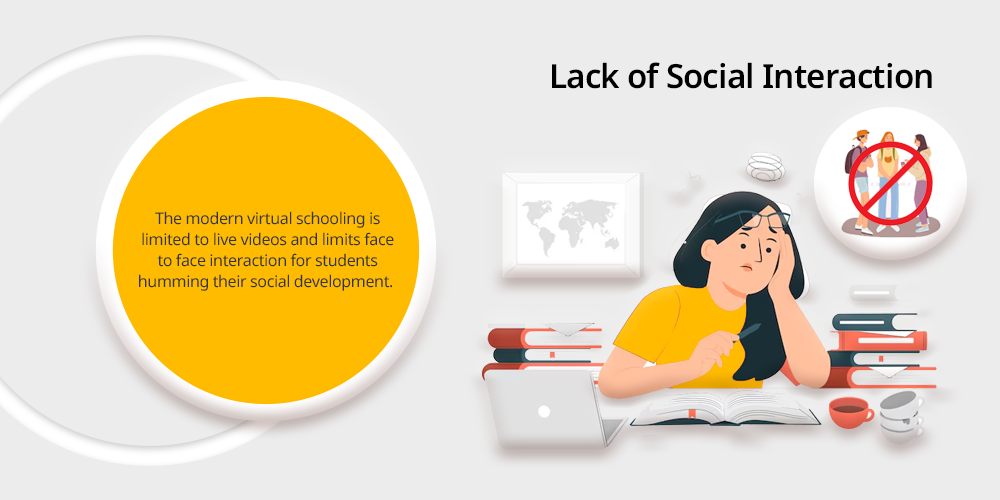
One of the primary drawbacks for virtual schooling is the limited human interaction involved. The modern virtual schooling is limited to live videos and limits face to face interaction for students humming their social development.
The traditional schooling provides opportunities to students where they can socialise, participate in teamwork activities and develop interpersonal skills which is essential for them to grow into a well rounded individual.
Developing such skills in a virtual environment is hard as the virtual environment can never replicate to the traditional schooling environment all though it can try to come up with new strategies for student engagement in online classroom setup.
3. Maintaining Student Engagement
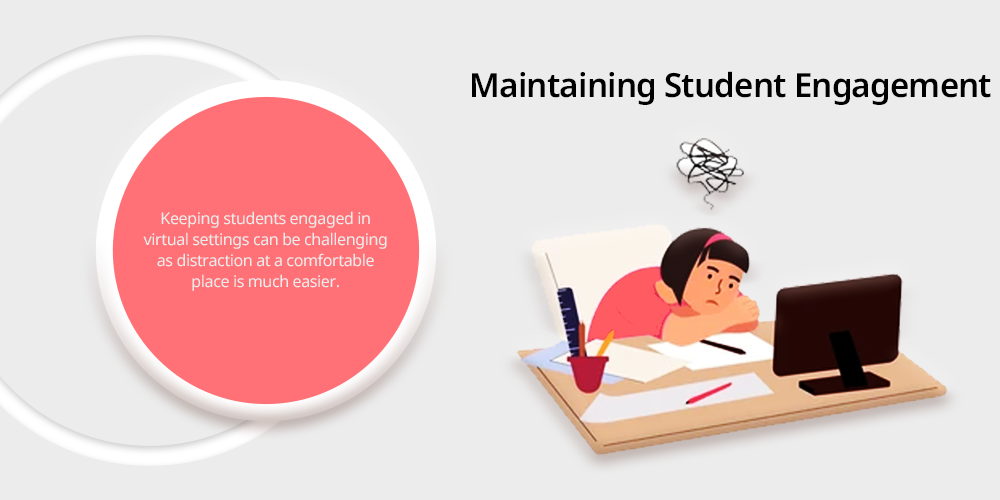
Keeping students engaged in virtual settings can be challenging as distraction at a comfortable place is much easier to find than in a physical classroom environment where everything is strategically planned for students to learn and to grow.
The problems are very similar to the situations that a parent faces in the case of homeschooling.
Virtual School arts suggested implementing interactive tools and strategies which can keep their learners motivated and hooked to their learning journey for a longer time.
Global Trends in Virtual Schooling
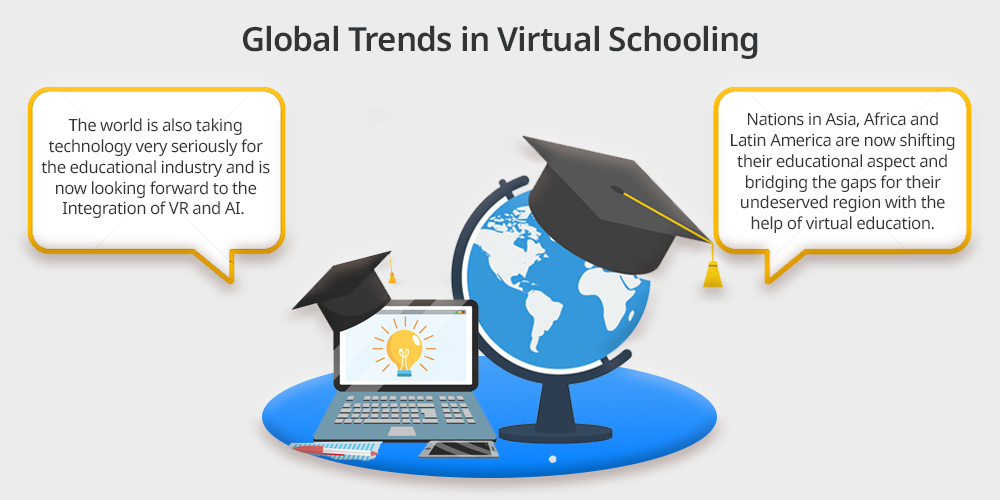
The global market for virtual schooling is witnessing a dynamic trend of evolution where we have observed an Increased Adoption in Developing Countries.
Nations in Asia, Africa and Latin America are now shifting their educational aspect and bridging the gaps for their undeserved region with the help of virtual education.
The world is also taking technology very seriously for the educational industry and is now looking forward to the Integration of VR and AI.
Advanced technology like virtual reality and artificial intelligence are now being integrated into the classroom activities to stimulate those real world experiences for students and make learning more personalized for them.
Globally it is observed that the public private partnership is now driving innovation to expand virtual schooling for students promoting Collaborations Between EdTech and Governments.
Virtual Schooling vs. Traditional Education
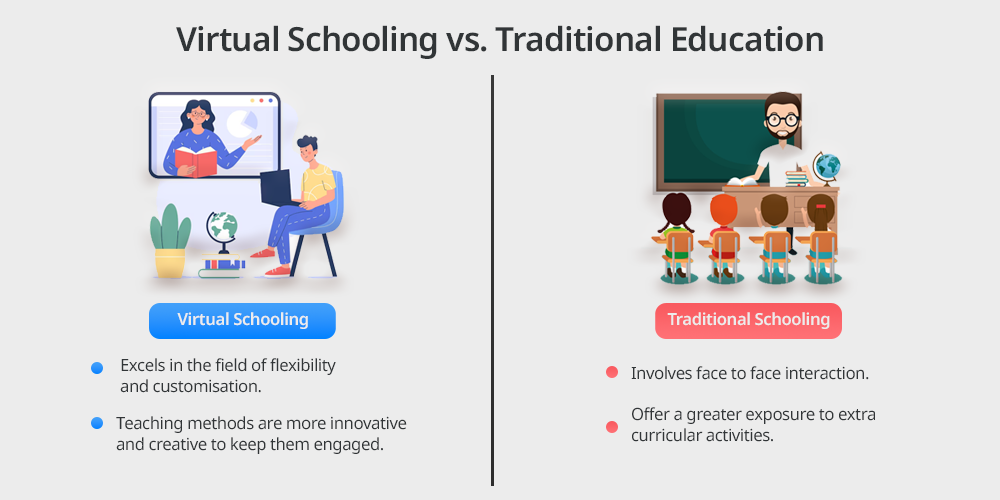
While traditional education is an existing form of structured environment which involves face to face interaction for students, virtual schooling excels in the field of flexibility and customisation for students.
Both forms of education have their own merits and demerits and are proven to be contributing well for students.
In order to choose between the two it is suggested for parents to carefully analyse the needs and preference of a student to make a known and wise decision.
Traditional schools offer a greater exposure to extra curricular activities and in person socialization where virtual schooling focuses more on personalized learning for students where the teaching methods are more innovative and creative to keep them engaged and motivated to learn.
Choosing between the two completely depends on the circumstance for the student and these both offer unparalleled benefits shaping the life of a child.
Conclusion
Virtual school is shaping the future for students and changing the dynamics for education by offering unparalleled flexibility, accessibility and innovation in the industry.
While the challenges for the virtual schooling remain the advancement of technology and efforts taken to bridge the gaps between the world’s promises or brighter future.
As a market is said to be growing exponentially it is believed that virtual schooling will redefine the learning for the coming generations creating circumstances that will be beneficial for all the stakeholders involved.

